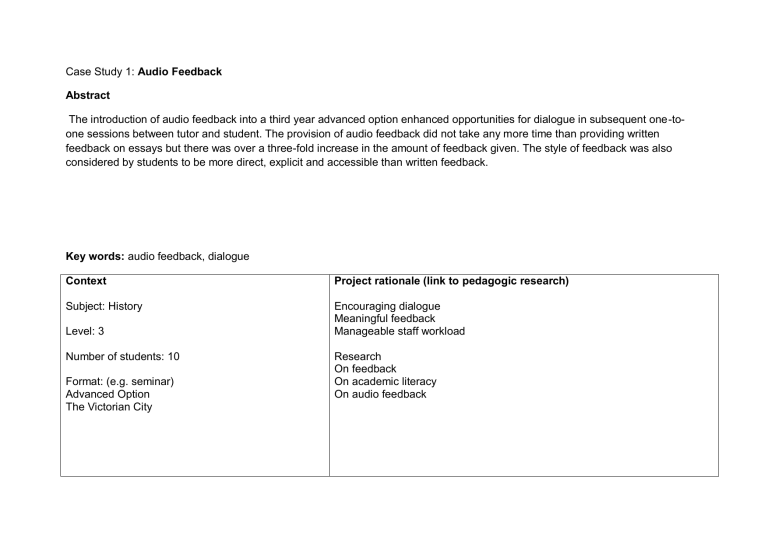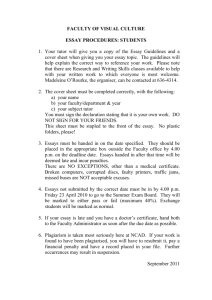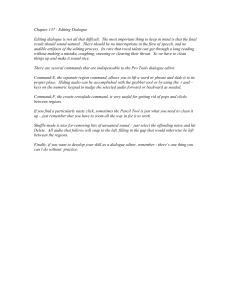Audio Feedback Abstract

Case Study 1: Audio Feedback
Abstract
The introduction of audio feedback into a third year advanced option enhanced opportunities for dialogue in subsequent one-toone sessions between tutor and student. The provision of audio feedback did not take any more time than providing written feedback on essays but there was over a three-fold increase in the amount of feedback given. The style of feedback was also considered by students to be more direct, explicit and accessible than written feedback.
Key words: audio feedback, dialogue
Context
Subject: History
Level: 3
Number of students: 10
Format: (e.g. seminar)
Advanced Option
The Victorian City
Project rationale (link to pedagogic research)
Encouraging dialogue
Meaningful feedback
Manageable staff workload
Research
On feedback
On academic literacy
On audio feedback
Initiative outline
The audio feedback was introduced for level 3 students to enhance formative assessment. Students submit essays electronically in pdf (or other) format and the tutor uses Adobe Acrobat Professional to annotate essays with short audio comments and short written ‘post-it’ style annotations on ways the essay could be improved.
The essays are returned electronically to the students without the mark, so encouraging the students to listen to/read the feedback in advance of a face-to-face session.
In individual tutorial sessions the students are provided with a mark and encouraged to comment on and further explore the feedback in more detail: discussing the next steps and ways to go forward noted in the audio feedback.
Implementation advice (including resources)
Adobe Acrobat Professional
Computer with microphone (or digital microphone)
Screenshot of essay
Benefits for teaching and learning
Feedback is more personal and accessible and by giving audio feedback in advance of a face-to-face meeting a dialogue is begun between tutor and student.
The technique gives the tutor an opportunity to provide more verbal feedback than written feedback in the same amount of marking time (see below for time analysis completed).
Task Written feedback Audio feedback
Reading essay
Reflecting on essay
Providing feedback
Amount of feedback
10 minutes
5 minutes
5 minutes
400 words
10 minutes
5 minutes
5 minutes
1320 words
Essay tutorial 15 minutes 15 minutes
The length of time and number of words are on average and are based on the same marker with the same essays.
Handwriting speed
– 20 words per minute (for composition)
Typing speed – 19 words per minute (for composition)
Speaking speed – 125 words per minute (for presentations)
Tutorials were found to be more productive (previously students often did not understand written feedback and tutorial was spent explaining comments. The verbal feedback is more direct and informal, therefore more dialogue takes place in tutorials)
Students were very positive about the verbal feedback because they were able to review it at any stage.
It has proved an efficient use of the tutors marking, assessment and tutorial time.
Troubleshooting tips
There may be accessibility issues and therefore this system may not be applicable for every tutor or student. However, in addition to Adobe Acrobat Professional pc software, it is available on ipads.
The technique is effective if used with a variety of strategies that students/tutors can choose from for different assignments at different stages of academic study.



